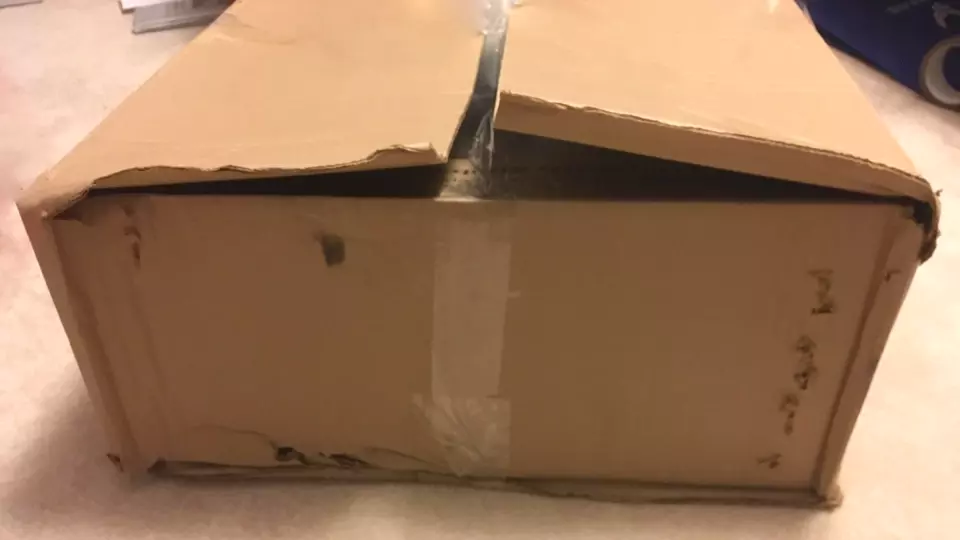United Parcel Service (UPS) is well-known for its dedication to delivering packages in a safe and dependable manner, relying on high standards and strict rules to ensure parcels reach their intended delivery location.
However, mistakes are inevitable in the realm of logistics. Damage to packages can occur due to a variety of reasons, including improper handling, during transit, and even weather conditions.
This article will help you understand at what stages of the shipping process your UPS package could have been damaged, how you can identify a damaged package, and the steps you can take to rectify the situation.
At What Stage Your UPS Package May Have Been Damaged
The UPS shipping procedure begins when the seller prints the shipping label and either drops the package off at a UPS Customer Center or has UPS collect it and ends when it’s delivered to its final destination.

As there are multiple touchpoints in this process, there is an increased risk of potential package damage. Here are the various stages during which your package may get damaged.
Damaged Upon Receipt
UPS typically refuses to accept damaged shipments and requests that the sender repackage the item accordingly. Although rare, a package may become damaged during the receipt process, either when UPS collects it or when the sender drops it off.
At this juncture, damages are typically minor, but they can still occur. Occasionally, a package may appear to be in perfect condition, but if the contents were improperly packaged, they may be susceptible to damage during later stages of the delivery process.
This emphasizes the significance of secure packaging, especially for fragile or delicate items.
Damaged in Transit
Damages in transit are more commonplace and can occur during sea, air, or road transport. As these vehicles move, packages can dislodge, slide, and occasionally collapse, which can compromise the structural integrity of the package and potentially harm its contents.

Vibrations during transport can also cause shipments to become dislodged and damaged. Besides that, sudden braking, swerving, or bumpy journeys can cause packages to shift and collide with one another or the vehicle’s walls.
The repeated impact and movement can cause significant damage, particularly if the contents of the package are not properly secured.
Damaged in Distribution Center
Occasionally, packages may also sustain damages within a distribution center. Poor stacking practices are one of the most common causes of this. When lighter packages are incorrectly stacked underneath heavier ones, the former can be crushed under the weight.
While it is best practice to stack lighter packages on top of heavier ones, human errors can contribute to such issues. Furthermore, Material Handling Equipment (MHE) such as forklifts can damage shipments by accidentally piercing them during the picking process.
The frequency of such incidents is significantly higher during peak periods. Although UPS has reliable standard operating procedures (SOP), human error may occasionally happen.
Damaged During Handling
In general, the chances of damages occurring during the handling process are high. Rough handling can not only damage the exterior of the package but also the contents.
Actions such as tossing packages may result in heavy impact and can cause breakages in fragile cargo. Besides that, packages that are handled using machinery may be accidentally crushed or pierced.
Rushed loading and unloading can result in shipments falling or being crushed by a heavier package. If the cargo is loaded without proper planning, it will cause considerable shifting in the later stages, which results in frequent cargo movement.
Damaged After Delivery
It is also possible for a shipment to be damaged after delivery has been made. Here are a few examples:
- Harsh weather conditions – Rain, storms, snow, and other adverse weather conditions can damage a cargo if it is left unprotected. Changes in temperature, humidity, and moisture can weaken the packaging and potentially harm the goods inside.
- Accidents – Package being dropped during delivery, pet damage, or vehicle damage are some of the common accidents that can occur.
- Poor Delivery Practices – In some cases, porches may be located behind a fence with limited access. In rare instances, a package may be tossed over the fence during the delivery. While UPS does not endorse these practices, they do occur occasionally and can contribute to package and content damages.
How to Identify a Damaged UPS Package
Identifying a damaged parcel can be easily done by a combination of visual, auditory, and olfactory inspections. We’ve provided a detailed step-by-step guide below:
1. Examine the Outer Packaging
Begin by closely inspecting the outer appearance of the package. Look for visible indicators of damage such as water marks, dents, scrapes, tears, or signs of crushing. An obviously damaged package may indicate that the contents within are similarly damaged.
It is critical to pay attention to these early warning indicators because they can indicate the overall condition of your product.
2. Shake and Listen
Shake the package gently and listen for any unusual noises. Sounds of rattling, clanging, or gurgling may indicate that the contents have shifted, become dislodged, or been damaged. This step should be performed with care to prevent further potential damage to the contents of the package.
It is a straightforward and effective method for identifying potential internal damage, particularly when the outer packaging appears undamaged.
3. Check for Moisture and Leaks
Examine the package for any signs of moisture or leaks, especially if the items you’re anticipating contain liquids. This may indicate that an internal liquid container has been compromised.
In addition to damaging the contents of the container, leaks can also compromise the structural integrity of the packaging itself. Therefore, the presence of moisture, stains, or other indications of leakage is a telling sign that the packaging may be compromised.
4. Check for Torn Packaging and Missing Contents
If the packaging is torn and its contents are exposed, check for missing items, as they may have been lost during transit or handling. Additionally, you could weigh the package to determine if it is lighter than what is stated on the packing list, which may also indicate missing items.
At this stage, you can refuse the delivery. However, if you choose to accept it, you should proceed to the next step.
5. Inspect the Contents
Finally, inspect the contents of the package to determine its condition. Refer to the packing slip or manuals included with the shipment to verify that everything is present and in the expected condition.
This thorough examination is your final course of action in finding and documenting any potential damages before accepting the items.
What to Do After You Have Received a Damaged Package
Once you have thoroughly examined your package and have determined that it is damaged, you will have a few options to resolve the issue. UPS has a streamlined process in place for such circumstances. Here is what you’ll need to do:
1. Either Accept or Refuse the Package
Your initial decision is whether or not to accept the package. If the damage is obvious and severe, you can immediately reject the package and the UPS driver will take the package back.
If you’ve rejected it after the delivery driver has left, UPS will collect it free of charge. However, this decision should be made upon delivery and while the package is still unopened.
In the event that you reject the delivery, you have the option of returning it to the sender. However, you should be aware that you may be required to pay delivery costs upfront, which you can obtain a refund for later on.
2. File a Damage Claim
If you accepted the package and discovered the damage upon opening it, you should submit a UPS damage claim. This procedure requires you to provide photographic evidence of the damage, as well as any relevant receipts or invoices.
To begin the procedure, contact UPS customer service and inform them of the damaged shipment. They will provide you with a claim form that you must complete and submit with supporting documentation. You can also submit your claim online
- Link: UPS “File a Claim” Page
UPS will evaluate your claim after it has been submitted and may request additional information. UPS will offer recompense for the damage if your claim is approved, mitigating the inconvenience caused by the unfortunate incident.
3. Contact the Sender
After identifying and documenting the damages, it is vital to notify the sender of the situation. They can coordinate a return with UPS and potentially reship your order. If you purchased your items via an e-commerce platform, you may be eligible for buyer protection policies.
These policies typically cover instances of damaged products and can add an extra layer of security to the resolution process. Do not hesitate to submit a complaint and escalate the issue to the platform’s customer service department if the seller is unresponsive or unwilling to resolve the dispute. These services exist to facilitate a resolution between you and the seller.

Get Free Course Access
If you enjoyed the article, don’t miss out on our free supply chain courses that help you stay ahead in your industry.

Gerrit Poel
Co-Founder & Writer
at freightcourse
About the Author
Gerrit is a certified international supply chain management professional with 16 years of industry experience, having worked for one of the largest global freight forwarders.
As the co-founder of freightcourse, he’s committed to his passion for serving as a source of education and information on various supply chain topics.
Follow us